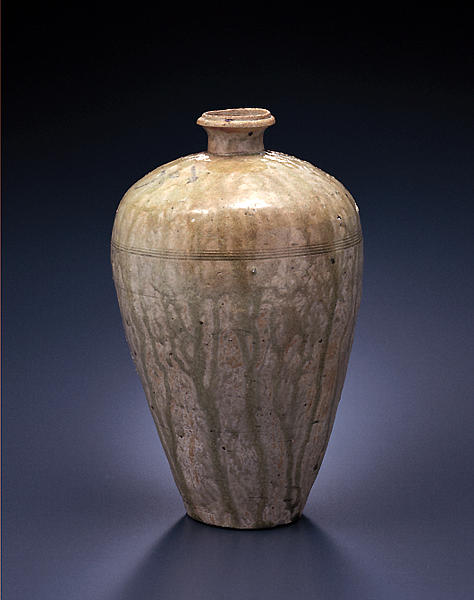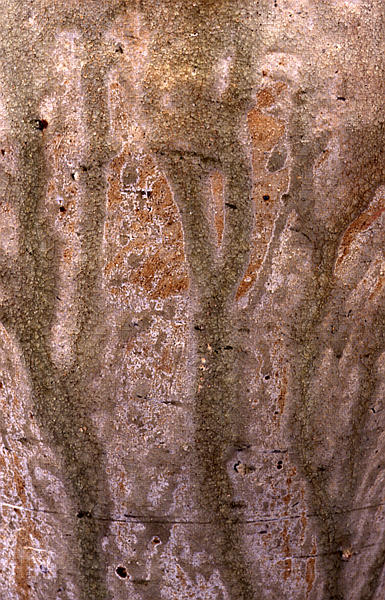古瀬戸灰釉瓶子
- 愛知県・瀬戸窯
- 鎌倉時代中期
- 13c
- 灰釉陶製
- H-33.2 D-20
鎌倉時代中期 13世紀
高:33.2cm 口径:5.6cm 胴径:20.0cm 底径:9.7cm
古瀬戸前期を特色づける製品は中国の白磁を模倣した四耳壷・瓶子・水注などの灰釉陶器である。中世唯一の施釉陶器として古瀬戸は中国陶磁とともにすでに前期の段階から東北地方から九州までの広い範囲に流通している。
この灰釉瓶子は中国白磁のいわゆる梅瓶を模倣したもので,完好な姿をよく留めている。やや外開きの小さな口頚部,張った肩からまっすぐに底部に向けて流麗な線を描いて成形された胴部の肩に四条の櫛描文が施されていて,13世紀中葉代の作であることを示している。焼成は極めてよく,所々に塗りむらが見られるが,灰釉はよく溶けて鮮緑色を呈し,肩から底部に流れ落ちるように掛かって,古瀬戸初期の灰釉の特色をよく示している。肩に墨書で「一号か」とあるが,後書きであろう。(楢崎)
灰釉(はいぐすり)
木灰や土灰など自然の灰を原料にしてつくった釉。
猿投灰釉手付壺
瀬戸窯(せと)
愛知県瀬戸市を中心とする最大級の窯業地帯です。その歴史の長さと窯業の盛んなことでは随一で、瀬戸物と言えば陶磁器というくらい広く名が知れ渡っています。古瀬戸は鎌倉から室町時代にかけての中世瀬戸窯の施釉陶器を指します。
古瀬戸灰釉印花文瓶子
瀬戸芋子茶入
梅瓶(めいぴん)
中国で口径の小さいものを梅の痩骨と呼ぶことからきた名です。中国では宋代の青白磁に多く見られ、朝鮮では高麗青磁や粉青沙器(ふんせいさき)に見られます。日本ではこの古瀬戸の瓶子がそれにあたります。
古瀬戸灰釉印花文瓶子
Catalogue Entry
Mid-Kamakura period, 13th century
Ko-Seto ware, ash glaze
Height, 33.2cm; mouth diameter, 5.6cm;
torso diameter, 20.0cm; base diameter, 9.7cm
Jars with 4 handles, tall bottles, and water ewers imitating Chinese white wares are some of the ceramic forms that characterize the early period of Ko-Seto ware. Ko-Seto was the only glazed ceramic ware of Japan's medieval period, and as such, by their early period, Ko-Seto ware objects were already being distributed, along with Chinese ceramics, across the majority of the Japanese mainland, from the Tohoku region in the north to Kyushu in the south.
This ash-glazed bottle form is an imitation of the so-called mei-ping shape bottle of Chinese white porcelains, and it is particularly well-formed. The bottle is characterized by a small, slightly outward-turning mouth-neck, an overall shape which drops from swelling shoulders in a elegantly subtle curve to the base, and 4 rows of combed lines that circle the swell between shoulder and torso. These elements indicate that the bottle was produced in the middle of the 13th century. The bottle was extremely well-fired, and while there is some mottling here and there, overall the ash glaze shows a good flow of light green color, spreading from the shoulders to the base, and thus is characteristic of the ash glazes of early period Ko-Seto wares. The ink inscription "ichigo ka" on the shoulder is a later addition. SN

